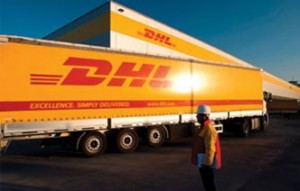 DHL Supply Chain will always strive to answer any of your supply chain management or logistics related questions. Protecting products to save lives: Securing the pharma supply chain. Pharmaceutical manufacturers are accustomed to operating complex global supply chains. And they are working to streamline operations in the face of escalating cost pressures, tighter margins and intense competition from generics and biosimilars. However, the new challenges of regulatory compliance and product protection are truly putting the sector to the test. Over the past decade the world market for pharmaceuticals has nearly doubled, reaching a total value of approximately $1 trillion. While the industry will continue to develop, its days of consistent high growth appear to be over a casualty of multiple factors, including healthcare spending cost control efforts, the demise of the ‘blockbuster’ drug and the rise of generics. The second major development shaking up pharma supply chains today is the growing requirement for condition/temperaturecontrolled distribution and the handling of finished medicines. A new set of issues is quickly rising to the top of the list of concerns for manufacturers and they have significant and very direct implications for supply chains. The issues derive from the increasingly complex requirements for securing and protecting product in the supply chain, both in stable developed and rapidly growing emerging markets. These requirements fall into two categories:
DHL Supply Chain will always strive to answer any of your supply chain management or logistics related questions. Protecting products to save lives: Securing the pharma supply chain. Pharmaceutical manufacturers are accustomed to operating complex global supply chains. And they are working to streamline operations in the face of escalating cost pressures, tighter margins and intense competition from generics and biosimilars. However, the new challenges of regulatory compliance and product protection are truly putting the sector to the test. Over the past decade the world market for pharmaceuticals has nearly doubled, reaching a total value of approximately $1 trillion. While the industry will continue to develop, its days of consistent high growth appear to be over a casualty of multiple factors, including healthcare spending cost control efforts, the demise of the ‘blockbuster’ drug and the rise of generics. The second major development shaking up pharma supply chains today is the growing requirement for condition/temperaturecontrolled distribution and the handling of finished medicines. A new set of issues is quickly rising to the top of the list of concerns for manufacturers and they have significant and very direct implications for supply chains. The issues derive from the increasingly complex requirements for securing and protecting product in the supply chain, both in stable developed and rapidly growing emerging markets. These requirements fall into two categories:
• Security from theft and counterfeiting, which will result in increasing requirements in the form of new country, regional and global approaches to anti-counterfeiting.
• A rapidly growing requirement for strict product temperature control and measurement (both 2–8°C and 15–25°C) across the end-to-end supply chain. Product security in the pharmaceutical industry, therefore, falls into two distinct categories. The first is an obvious focus on protecting against theft, counterfeiting, diversion and adulteration. The second involves protecting the integrity – or condition – of increasingly sensitive product as it moves through the supply chain to the end customer.

